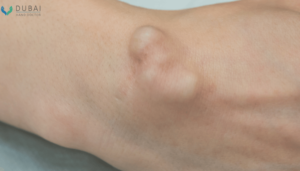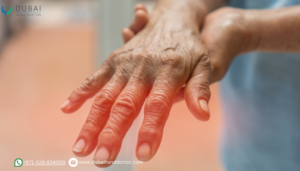Rheumatoid Arthritis: Symptoms and Treatments
Rheumatoid arthritis (RA) is more than just a joint condition. It’s a complex autoimmune disorder affecting millions worldwide. This chronic inflammatory arthropathy disease affects all ages and backgrounds of people.
While it primarily affects the joints, RA can have far-reaching implications for one’s overall health and well-being.
In this blog, we will delve into the intricate world of rheumatoid arthritis in hand, exploring its symptoms, causes, and available treatments.
What is Rheumatoid Arthritis?
Rheumatoid arthritis (RA) is a lifelong condition where the immune system mistakenly attacks healthy tissues. This attack leads to inflammation in the affected joints, causing pain, swelling, stiffness, and eventually joint damage and deformities.
However, RA is not limited to joint inflammation; it can also impact other bodily tissues, potentially leading to complications in organs such as the lungs, heart, and eyes.
What are the Symptoms of Rheumatoid Arthritis in Hands?
Rheumatoid arthritis can manifest with various signs and symptoms, varying in severity from person to person.
The most common symptoms of RA in hands include the following:
- Pain or aching in more than one joint of the hands
- Joint stiffness that usually worsens in the mornings or after inactivity
- Tenderness and swelling of finger joint
- The same symptoms on both hands
- Reduced grip strength
- Joint deformities in hand
How is Rheumatoid Arthritis Diagnosed?
Diagnosing rheumatoid arthritis in hands can be challenging in its early stages as its symptoms resemble other conditions. There isn’t a single blood test or specific physical finding that can definitively confirm the diagnosis.
- Physical Exam: In a physical examination, your doctor will assess your joints for swelling, redness, and warmth.
- Imaging Tests: Your doctor may recommend X-rays, MRI, and ultrasound tests to judge and monitor the severity of the disease in your body.
- Blood Tests: Blood tests measure markers like elevated erythrocyte sedimentation rate (ESR) or C-reactive protein (CRP) to detect inflammation.
- Other common blood tests detect rheumatoid factor and anti-cyclic citrullinated peptide (anti-CCP) antibodies.
How is Rheumatoid Arthritis Treated?
There is no cure for rheumatoid arthritis. The goal of RA hands treatment is to reduce inflammation, prevent joint damage and relieve and control symptoms.
RA treatment typically involves a combination of the following approaches:
Medications
Medications recommended by your doctor for managing rheumatoid arthritis are tailored to your symptom’s severity and the duration of your condition.
- Over-the-counter NSAIDs like ibuprofen and naproxen can relieve pain and inflammation in hands.
- Corticosteroids like prednisone reduce inflammation and pain. They’re often prescribed for quick relief, with gradual tapering.
- Conventional DMARDs like Methotrexate, leflunomide, hydroxychloroquine, and sulfasalazine slow RA progression.
- Biologic DMARDs like adalimumab, etanercept, and infliximab target the immune response. They’re often used with conventional DMARDs.
- Targeted Synthetic DMARDs, like baricitinib and tofacitinib, are used if other treatments fail.
These medications can carry side effects, so you should consume them as prescribed by your doctor.
Therapy
- Physical Therapy: Physical therapists can design exercise programs to improve finger joint mobility and strengthen muscles.
- Occupational Therapy: Occupational therapists assist with finding adaptive strategies and tools to manage daily activities and reduce strain on joints.
- Assisted Devices: Assistive devices, like kitchen tools with hand grips or buttonhooks for dressing, can reduce joint stress.
Surgery
Surgery may be considered when medications don’t prevent or slow joint damage:
- Synovectomy: This procedure involves removing the inflamed synovium (lining of the joint) to alleviate pain and improve joint flexibility.
- Tendon Repair: Joint inflammation and damage can lead to tendon problems. Surgeons can repair damaged tendons around the joint.
- Total Joint Replacement: Total Joint Replacement surgery involves the removal of the damaged components of a finger joint, replacing them with a prosthesis crafted from metal and plastic.
- Joint Fusion: Joint Fusion can be suggested to stabilize or reposition a finger joint and provide pain relief, especially when a joint replacement is not a viable option.
Early diagnosis and intervention are critical to achieving the best outcomes in RA management. Collaborate closely with your healthcare team to establish and maintain an appropriate treatment plan.
Consult Dr. Ehab Bassim Aldlyami for Rheumatoid Arthritis Treatment
When it comes to treatment for arthritis in hand, one name stands out: Dr. Ehab Bassim Aldlyami. His tailored approach caters to the full spectrum of RA severity, from mild discomfort to complex cases requiring finger arthritis surgery in Dubai. With his expertise, you can expect the best outcomes.
Book your appointment today to take the first step toward effective rheumatoid arthritis management and improved hand function.











